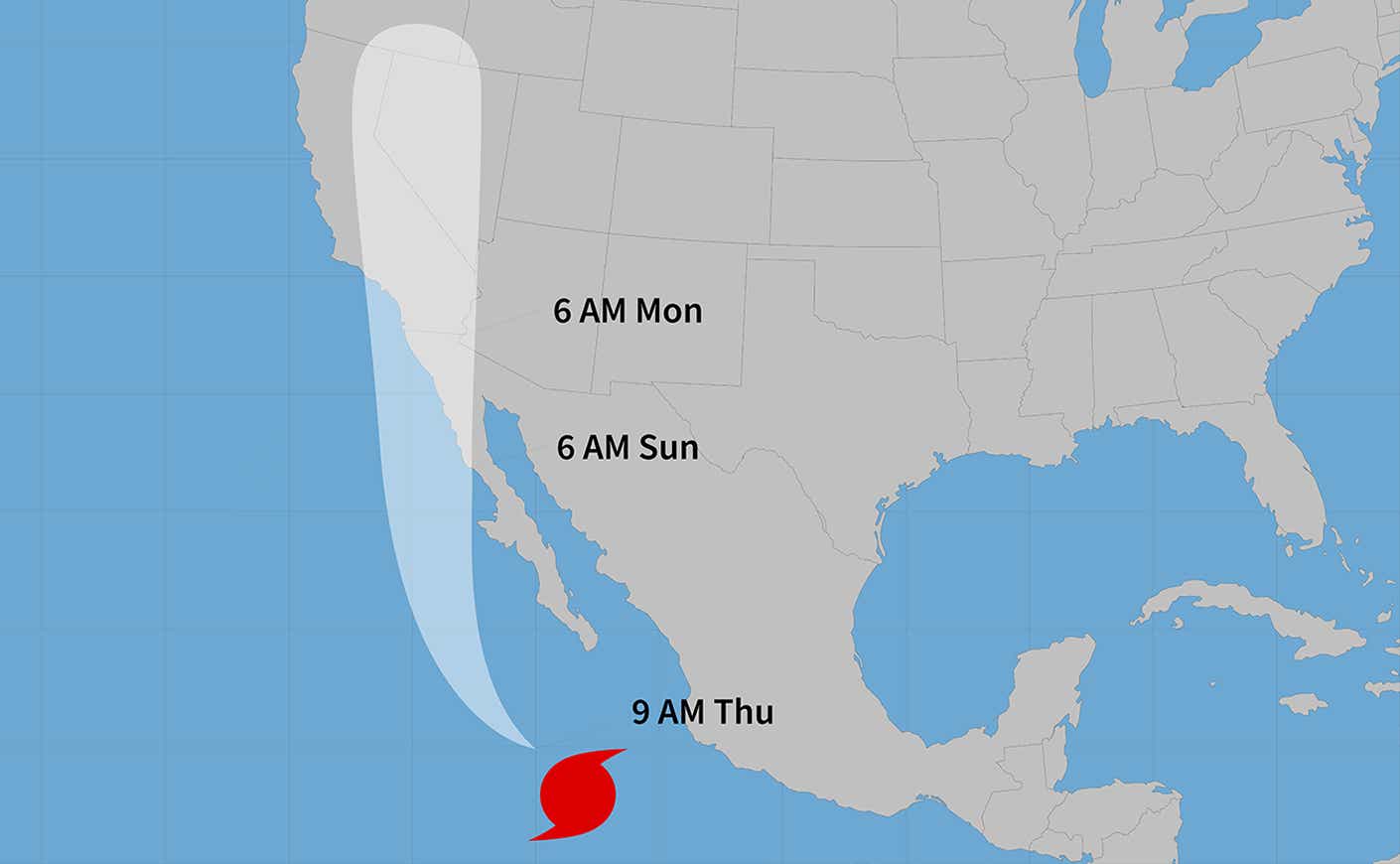California’s bracing for some serious flooding following an unprecedented natural disaster. Though tropical storm Hilary was downgraded from a hurricane, forecasters warn that it could still likely cause “catastrophic and life-threatening flooding,” which is expected through at least Monday.
These warnings come as the state tries to prepare for any possible devastation. On Saturday, Gov. Gavin Newsom declared a state of emergency for much of Southern California ahead of Hurricane Hilary’s landfall.
“California has thousands of people on the ground working hand-in-hand with federal and local personnel to support communities in Hurricane Hilary’s path with resources, equipment, and expertise,” he said in a statement.
This marks the first time the state has faced such a threat in nearly a century. The last time a tropical storm made landfall was 84 years ago, with the 1939 storm El Cordonazo, which led to at least 45 deaths and $2 million in damage. But, believe it or not, it has seen worse — the first (and only) hurricane to hit the West Coast was in 1858.
Here’s what we know so far about how much rain is expected and how to stay safe.
How much rain is expected in Southern California?
Los Angeles and San Diego could expect to see between 2 to 4 inches of rain, while surrounding mountains and deserts could see anywhere from 10 to 12 inches.
But the rain likely won’t just affect the Golden State. As the storm moves out, parts of Oregon and Idaho could see as much as 3 to 5 inches of rain. Similarly, southwestern Nevada faces a “high risk” of excessive rainfall and flash flooding.
While that might not seem like much, many parts of the Southwest aren’t accustomed to heavy rains, and even just a couple of inches could trigger dangerous flooding and mudslides.
There is some reprieve in sight, though. After some lingering showers, meteorologist Jake Sojda told USA Today that he expects nice weather to return in full force on Tuesday.
What’s the difference between a flood watch and a flash flood?
A flood watch means you’re in an area where “conditions are favorable for flooding,” and you should be prepared to flee for higher ground. But, as the National Weather Service points out, it doesn’t necessarily mean flooding will happen — just that there’s a possibility it could.
On the other hand, a flash flood warning means you’re in immediate danger and you should take action as soon as possible. What’s dangerous about these is they can take anywhere from a few hours to just minutes to develop, so you might not want to take any risks.
But if flooding isn’t bad enough to warrant a warning, officials may issue a flood advisory, which could cause an inconvenience at best — but, if caution isn’t exercised, it could lead to hazardous situations, such as driving onto a street with more water than you expected.
How can you stay safe after a hurricane or tropical storm?
There are a number of ways to protect yourself from getting into a potentially life-threatening situation, according to the Centers for Disease Control.
Since flooding is common after hurricanes and tropical storms, you’re going to want to avoid driving in flooded areas, and you may want to stay off roads altogether. Your car won’t protect you, and it could stall or be swept away in moving water. Peter Jones, a spokesman for the California Department of Transportation, recommended avoiding all nonessential travel. He also advised limiting your “time on the road during the peak of the storm, which is Sunday night to Monday.”
If your power goes out, light some candles or use flashlights and keep a fire extinguisher handy in case it something catches on fire. The CDC also warns to clear of fallen power lines and damaged buildings.
Since the risk of injury during and after natural disasters is higher than normal, make sure you also properly and quickly treat any small wounds to prevent infection.
What do you do if your home floods?
If you were one of the ones to evacuate, you should only return home when officials declare it safe. Once this happens, the CDC recommends going during the daytime, and instead of turning on any lights, opt for a battery-powered flashlight or lantern.
When you arrive, you’re going to want to shut off the main power from a dry location, and if it’s covered in standing water, then your best bet is to call an electrician. “NEVER turn the power on or off yourself or use an electric tool or appliance while standing in water,” the agency states.
You also want to be aware of any gas leaks. If you suspect that you have one, shut off the main gas valve, open all of your windows, notify the gas company or fire department, and leave immediately.
While cleaning up your home after a flood can seem overwhelming, some parts can be salvaged. You will likely need to toss mattresses and food that came into contact with any flood water, but you can clean walls and hard-surface floors “with soap and water and disinfect with a solution of one cup of bleach to five gallons of water.”









